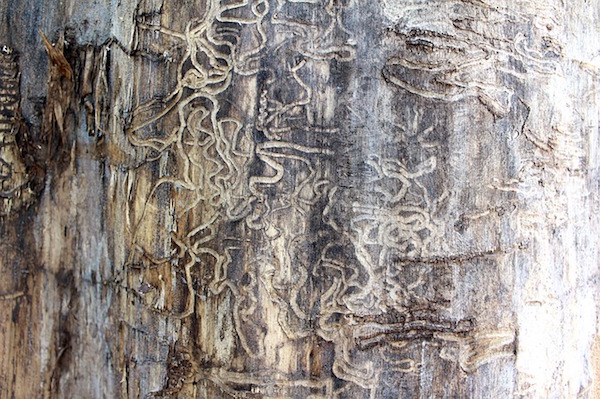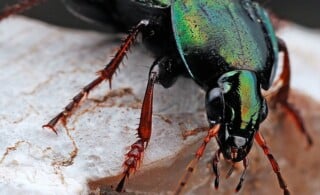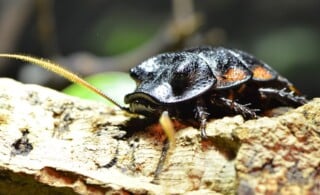
Of all the critters that may haunt your home, termites are the most troublesome. In fact, termites cause more damage to homes each year than all other natural disasters combined. Termites live underground in a network of tunnels in the soil. They feed on wood and wood-derived products, making termite damage expensive for homeowners.
Detecting Termite Control Problems
Termites usually appear in spring. Generally, the first sign of infestation is the appearance of winged termites, known as “swarmers.” These are small critters that act as scouts for the rest of the colony. They look like winged ants, but will shed their wings when they mate—it is often the appearance of these lost wings that alerts homeowners to a problem. Swarmers are attracted to light, so they often appear around doors, windows, and light fixtures.
Another sign of termite damage is the appearance of foraging tubes along foundation walls and subfloors. These pencil-wide tubes made of dried mud are used as shelter by the termites as they move from their underground colonies to their source of food, your house. The termites then tunnel into the wood along the grain, leaving dried mud or soil caked on the walls of the tunnel.
There is often no sign of the mature termites, which resemble small, white ants. Because they hide behind drywall or paneling and under floors, they will often go undetected for years. For this reason, confirming a termite control problem often requires an experienced termite inspector.
Treating Your Termite Control Problem
Although there are a few do-it-yourself termite control products on the market, getting rid of termite problems is often a long, complicated process. It requires knowledge of your house’s construction and an understanding of where the termites will most likely enter. Termite control also requires some costly, specialized equipment and large amounts of chemicals that most people are not willing to invest in. Add to that the importance of the investment you have in your home, and it’s clear that this is a job best left to the pros.
Ready to start your termite problem?
Find ProsChoosing a Termite Control Company
The first consideration when choosing a termite control professional is licensing. Be sure your contractor is a member of the National Pest Control Association, and is licensed by your state’s Department of Agriculture. These things suggest that a company is well-established and has the technical training that the job requires.
Prices of termite control services will vary according to the extent of your termite problem, the techniques and chemicals used, and any warranty or follow-up services provided. Get inspections and estimates from several contractors in order to be sure you are getting both thorough treatment and a fair price. Take your time on this—termites work slowly. And watch out for companies that try to pressure you into signing on immediately.
Treatment techniques include rodding and soil trenching, drilling of slabs and foundations, as well as the use of baits. Companies will use combinations of these treatments, depending on the type and extent of your termite problem. If problems persist after treatment, and they sometimes do, your company should be willing to do follow-up work at no additional charge. If done correctly, termite control will usually last at least five years.
Remember that these little guys can do big damage, so don’t treat termite problems lightly.
 A Homeowner’s Guide to Entomology and House Insects
A Homeowner’s Guide to Entomology and House Insects  Roach Control the Natural Way
Roach Control the Natural Way  Getting Rid of Raccoons: Problems and Solutions
Getting Rid of Raccoons: Problems and Solutions  Flea Control & Prevention
Flea Control & Prevention  Moth Control Basics
Moth Control Basics 

Great article! Many thanks to Home Advisor for all the helpful insights.
A couple other points to add about termite inspection that may benefit readers–
– Geographical risk – termites are much more prevalent in certain states, primarily in the south
– Other termite signs – termite droppings (indicate drywood termites), damaged wood, termite “rain” (knock on drywall to detect dried mud falling on other side)
– Distinguish between termites & carpenter ants – often confused for each other, termites eat wood while carpenter ants simply dig through it. Carpenter ants produce larger wood shavings and their wood damage is smoother